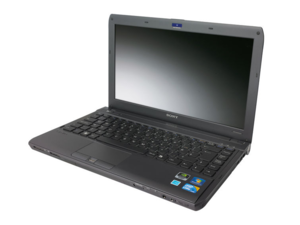2010 S (VPCS)
This page is currently WIP!!
Not to be confused with the 2011 VPCS Series, featuring 2nd gen Intel Core processors.
Overview
The Sony VAIO VPCS (2010) series is a mid-end mainstream laptop computer range that was released by Sony in 2010. They were designed to be average small consumer/business laptops, with a decent build quality and average specifications.
They include first generation Intel Core processors (i3/i5), and a optional middle-class NVIDIA GeForce 310M. It does not have a switchable graphics option, so if you have the NVIDIA GPU, you cannot switch to the Intel iGPU for better battery life.
They featured Sony's iconic cylinder design power button, and were mostly built out of plastic. Overall, it fits well into the 2010 VAIO range and has similar looks to the rest of the models released around that time. Higher end models would come with a backlit keyboard, and even a Blu-Ray drive and SSD, both of which are quite rare to find today.
The VPCC series run on DDR3 RAM with official support up to 8GB, though one could use two 8GB sticks to upgrade to a maximum of 16GB RAM if upgraded to a quad core i7 CPU. They shipped with Windows 7.
It came with a 5000mAh battery which supposedly lasted 5 hours on the i5 NVIDIA model.
Detailed Specs
Processor: Arrandale 1st gen Core i3 330M (2 x 2.1 GHz) or Core i5 520M (2 x 2.4 - 2.9 GHz), i5 430M (2 x 2.3 - 2.5 GHz), i7-640M
Graphics: NVIDIA 310M (512MB VRAM) or Intel HD Graphics
Memory: 4/6GB DDR3-1066 RAM, up to 8GB
Display: Glossy 13.3 inch 16:9 1366 x 768 panel
Storage: 500GB HDD, 128/256/512GB SSD, 2.5" SATA slot
Weight: 2kg
MSRP: Roughly $1000-1400
Daily Usage Today
The VPCS is still usable today for light browsing tasks and media consumption, however games will not run very well due to the integrated graphics. With the NVIDIA graphics it will perform a bit better at gaming, but it is only really suited for very light or retro games due to it being a low end GPU, if you are looking for something more powerful, the Z1 (VPCZ1) has a much more powerful GT 330M. Windows 11 runs decently on the laptop as well, with most functions working. It is recommended to upgrade the laptop with at least a 4GB module and SSD for good performance with Windows 10 and above.
For maximum performance, it is recommended to use Linux with a lightweight desktop environment such as XFCE.
